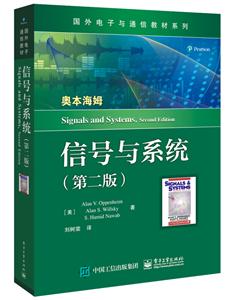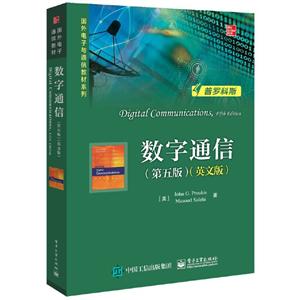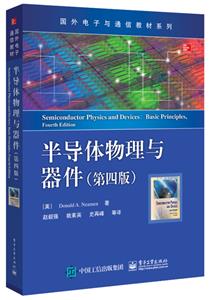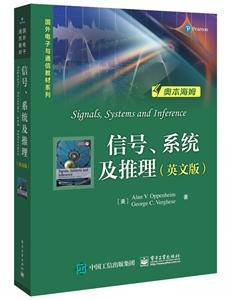
作者:PeterVanZant(彼得·范·赞特
页数:568
出版社:电子工业出版社
出版日期:2020
ISBN:9787121243783
电子书格式:pdf/epub/txt
内容简介
本书是一本介绍半导体集成电路和器件制造技术的专业书籍,在半导体领域享有很高的声誉。本书的范围包括半导体工艺的每个阶段:从原材料的制备到封装、测试和成品运输,以及传统的和现代的工艺。全书提供了详细的插图和实例,每章包含回顾总结和习题,并辅以丰富的术语表。第六版修订了微芯片制造领域的新进展,讨论了用于图形化、掺杂和薄膜步骤的优选工艺和很好技术,使隐含在复杂的现代半导体制造材料和工艺中的物理、化学和电子的基础知识更易理解。本书的主要特点是避开了复杂的数学问题介绍工艺技术内容;加入了半导体业界的新成果,可以使读者了解工艺技术发展的趋势。
本书特色
本书是一本介绍半导体集成电路和器件制造技术的专业书籍,在半导体领域享有很高的声誉。本书的范围包括半导体工艺的每个阶段:从原材料的制备到封装、测试和成品运输,以及传统的和现代的工艺。全书提供了详细的插图和实例,每章包含回顾总结和习题,并辅以丰富的术语表。第六版修订了微芯片制造领域的新进展,讨论了用于图形化、掺杂和薄膜步骤的先进工艺和尖端技术,使隐含在复杂的现代半导体制造材料和工艺中的物理、化学和电子的基础知识更易理解。本书的主要特点是避开了复杂的数学问题介绍工艺技术内容;加入了半导体业界的新成果,可以使读者了解工艺技术发展的趋势。
目录
Contents
1 The Semiconductor Industry 1
Introduction 1
Birth of an Industry 1
The Solid-State Era 3
Integrated Circuits (ICs) 4
Process and Product Trends 5
Moore’s Law 6
Decreasing Feature Size 6
Increasing Chip and Wafer Size 8
Reduction in Defect Density 9
Increase in Interconnection Levels 10
The Semiconductor Industry Association Roadmap 10
Chip Cost 11
Industry Organization 11
Stages of Manufacturing 12
Six Decades of Advances in Microchip Fabrication Processes 14
The Nano Era 16
Review Topics 17
References 17
2 Properties of Semiconductor Materials and Chemicals 19
Introduction 19
Atomic Structure 19
The Bohr Atom 19
The Periodic Table of the Elements 20
Electrical Conduction 23
Conductors 23
Dielectrics and Capacitors 23
Resistors 24
Intrinsic Semiconductors 24
Doped Semiconductors 25
Electron and Hole Conduction 26
Carrier Mobility 28
Semiconductor Production Materials 29
Germanium and Silicon 29
Semiconducting Compounds 29
Silicon Germanium 31
Engineered Substrates 31
Ferroelectric Materials 31
Diamond Semiconductors 32
Process Chemicals 32
Molecules, Compounds, and Mixtures 32
Ions 33
States of Matter 34
Solids, Liquids, and Gases 34
Plasma State 34
Properties of Matter 34
Temperature 34
Density, Specic Gravity, and Vapor Density 35
Pressure and Vacuum 36
Acids, Alkalis, and Solvents 37
Acids and Alkalis 37
Solvents 38
Chemical Purity and Cleanliness 38
Safety Issues 38
The Material Safety Data Sheet 39
Review Topics 39
References 39
3 Crystal Growth and Silicon Wafer Preparation 41
Introduction 41
Semiconductor Silicon Preparation 41
Silicon Wafer Preparation Stages 42
Crystalline Materials 42
Unit Cells 43
Poly and Single Crystals 43
Crystal Orientation 44
Crystal Growth 45
Czochralski Method 45
Liquid-Encapsulated Czochralski 47
Float Zone 47
Crystal and Wafer Quality 49
Point Defects 49
Dislocations 50
Growth Defects 50
Wafer Preparation 51
End Cropping 51
Diameter Grinding 51
Crystal Orientation, Conductivity, and Resistivity Check 51
Grinding Orientation Indicators 52
Wafer Slicing 53
Wafer Marking 54
Rough Polish 54
Chemical Mechanical Polishing 55
Backside Processing 55
Double-Sided Polishing 56
Edge Grinding and Polishing 56
Wafer Evaluation 56
Oxidation 57
Packaging 57
Wafer Types and Uses 57
Reclaim Wafers 57
Engineered Wafers (Substrates) 57
Review Topics 58
References 58
4 Overview of Wafer Fabrication and Packaging 59
Introduction 59
Goal of Wafer Fabrication 59
Wafer Terminology 59
Chip Terminology 61
Basic Wafer-Fabrication Operations 63
Layering 63
Patterning 64
Circuit Design 66
Reticle and Masks 68
Doping 69
Heat Treatments 69
Example Fabrication Process 72
Wafer Sort 74
Packaging 75
Summary 75
Review Topics 76
References 76
5 Contamination Control 77
Introduction 77
The Problem 77
Contamination-Caused Problems 80
Contamination Sources 81
General Sources 81
Air 81
Clean Air Strategies 82
Cleanroom Workstation Strategy 83
Tunnel or Bay Concept 85
Micro- and Mini-Environments 86
Temperature, Humidity, and Smog 87
Cleanroom Construction 88
Construction Materials 88
Cleanroom Elements 89
Personnel-Generated Contamination 93
Process Water 94
Process Chemicals 96
Equipment 99
Cleanroom Materials and Supplies 99
Cleanroom Maintenance 100
Wafer-Surface Cleaning 100
Particulate Removal 102
Wafer Scrubbers 102
High-Pressure Water Cleaning 103
Organic Residues 103
Inorganic Residues 103
Chemical-Cleaning Solutions 104
General Chemical Cleaning 104
Oxide Layer Removal 105
Room Temperature and Ozonated Chemistries 106
Water Rinsing 108
Drying Techniques 110
Contamination Detection 112
Review Topics 112
References 113
6 Productivity and Process Yields 115
Overview 115
Yield Measurement Points 115
Accumulative Wafer-Fabrication Yield 116
Wafer-Fabrication Yield Limiters 117
Number of Process Steps 118
Wafer Breakage and Warping 118
Process Variation 119
Mask Defects 120
Wafer-Sort Yield Factors 120
Wafer Diameter and Edge Die 121
Wafer Diameter and Die Size 122
Wafer Diameter and Crystal Defects 122
Wafer Diameter and Process Variations 123
Die Area and Defect Density 124
Circuit Density and Defect Density 125
Number of Process Steps 125
Feature Size and Defect Size 125
Process Cycle Time 125
Wafer-Sort Yield Formulas 125
Assembly and Final Test Yields 128
Overall Process Yields 128
Review Topics 129
References 130
7 Oxidation 131
Introduction 131
Silicon Dioxide Layer Uses 131
Surface Passivation 131
Doping Barrier 132
Surface Dielectric 132
Device Dielectric (MOS Gates) 133
Device Oxide Thicknesses 134
Thermal Oxidation Mechanisms 134
Influences on the Oxidation Rate 137
Thermal Oxidation Methods 140
Horizontal Tube Furnaces 140
Temperature Control System 141
Source Cabinet 143
Vertical Tube Furnaces 143
Rapid Thermal Processing 146
High-Pressure Oxidation 149
Oxidant Sources 151
Oxidation Processes 154
Preoxidation Wafer Cleaning 154
Postoxidation Evaluation 155
Surface Inspection 156
Oxide Thickness 156
Oxide and Furnace Cleanliness 156
Thermal Nitridation 156
Review Topics 157
References 157
8 The Ten-Step Patterning Process—Surface Preparation to Exposure 161
Introduction 161
Overview of the Photomasking Process 162
Ten-Step Process 165
Basic Photoresist Chemistry 167
Photoresist 167
Photoresist Performance Factors 169
Resolution Capability 169
Adhesion Capability 170
Process Latitude 171
Pinholes 172
Particle and Contamination Levels 173
Step Coverage 173
Thermal Flow 173
Comparison of Positive and Negative Resists 173
Physical Properties of Photoresists 175
Solids Content 175
Viscosity 175
Surface Tension 176
Index of Refraction 176
Storage and Control of Photoresists 176
Light and Heat Sensitivity 176
Viscosity Sensitivity 177
Shelf Life 177
Cleanliness 177
Photomasking Processes—Surface Preparation to Exposure 178
Surface Preparation 178
Particle Removal 178
Dehydration Baking 178
Wafer Priming 179
Spin Priming 180
Vapor Priming 180
Photoresist Application (Spinning) 181
The Static Dispense Spin Process 181
Dynamic Dispense 183
Moving-Arm Dispensing 183
Manual Spinners 183
Automatic Spinners 184
Edge Bead Removal 185
Backside Coating 185
Soft Bake 185
Convection Ovens 186
Manual Hot Plates 187
In-Line, Single-Wafer Hot Plates 187
Moving-Belt Hot Plates 187
Moving-Belt Infrared Ovens 188
Microwave Baking 188
Vacuum Baking 188
Alignment and Exposure 189
Alignment and Exposure Systems 189
Exposure Sources 191
Alignment Criteria 191
Aligner Types 193
Postexposure Bake 196
Advanced Lithography 198
Review Topics 198
References 198
9 The Ten-Step Patterning Process—Developing to Final Inspection 201
Introduction 201
Development 201
Positive Resist Development 201
Negative Resist Development 203
Wet Development Processes 203
Dry (or Plasma) Development 206
Hard Bake 207
Hard-Bake Methods 207
Hard-Bake
1 The Semiconductor Industry 1
Introduction 1
Birth of an Industry 1
The Solid-State Era 3
Integrated Circuits (ICs) 4
Process and Product Trends 5
Moore’s Law 6
Decreasing Feature Size 6
Increasing Chip and Wafer Size 8
Reduction in Defect Density 9
Increase in Interconnection Levels 10
The Semiconductor Industry Association Roadmap 10
Chip Cost 11
Industry Organization 11
Stages of Manufacturing 12
Six Decades of Advances in Microchip Fabrication Processes 14
The Nano Era 16
Review Topics 17
References 17
2 Properties of Semiconductor Materials and Chemicals 19
Introduction 19
Atomic Structure 19
The Bohr Atom 19
The Periodic Table of the Elements 20
Electrical Conduction 23
Conductors 23
Dielectrics and Capacitors 23
Resistors 24
Intrinsic Semiconductors 24
Doped Semiconductors 25
Electron and Hole Conduction 26
Carrier Mobility 28
Semiconductor Production Materials 29
Germanium and Silicon 29
Semiconducting Compounds 29
Silicon Germanium 31
Engineered Substrates 31
Ferroelectric Materials 31
Diamond Semiconductors 32
Process Chemicals 32
Molecules, Compounds, and Mixtures 32
Ions 33
States of Matter 34
Solids, Liquids, and Gases 34
Plasma State 34
Properties of Matter 34
Temperature 34
Density, Specic Gravity, and Vapor Density 35
Pressure and Vacuum 36
Acids, Alkalis, and Solvents 37
Acids and Alkalis 37
Solvents 38
Chemical Purity and Cleanliness 38
Safety Issues 38
The Material Safety Data Sheet 39
Review Topics 39
References 39
3 Crystal Growth and Silicon Wafer Preparation 41
Introduction 41
Semiconductor Silicon Preparation 41
Silicon Wafer Preparation Stages 42
Crystalline Materials 42
Unit Cells 43
Poly and Single Crystals 43
Crystal Orientation 44
Crystal Growth 45
Czochralski Method 45
Liquid-Encapsulated Czochralski 47
Float Zone 47
Crystal and Wafer Quality 49
Point Defects 49
Dislocations 50
Growth Defects 50
Wafer Preparation 51
End Cropping 51
Diameter Grinding 51
Crystal Orientation, Conductivity, and Resistivity Check 51
Grinding Orientation Indicators 52
Wafer Slicing 53
Wafer Marking 54
Rough Polish 54
Chemical Mechanical Polishing 55
Backside Processing 55
Double-Sided Polishing 56
Edge Grinding and Polishing 56
Wafer Evaluation 56
Oxidation 57
Packaging 57
Wafer Types and Uses 57
Reclaim Wafers 57
Engineered Wafers (Substrates) 57
Review Topics 58
References 58
4 Overview of Wafer Fabrication and Packaging 59
Introduction 59
Goal of Wafer Fabrication 59
Wafer Terminology 59
Chip Terminology 61
Basic Wafer-Fabrication Operations 63
Layering 63
Patterning 64
Circuit Design 66
Reticle and Masks 68
Doping 69
Heat Treatments 69
Example Fabrication Process 72
Wafer Sort 74
Packaging 75
Summary 75
Review Topics 76
References 76
5 Contamination Control 77
Introduction 77
The Problem 77
Contamination-Caused Problems 80
Contamination Sources 81
General Sources 81
Air 81
Clean Air Strategies 82
Cleanroom Workstation Strategy 83
Tunnel or Bay Concept 85
Micro- and Mini-Environments 86
Temperature, Humidity, and Smog 87
Cleanroom Construction 88
Construction Materials 88
Cleanroom Elements 89
Personnel-Generated Contamination 93
Process Water 94
Process Chemicals 96
Equipment 99
Cleanroom Materials and Supplies 99
Cleanroom Maintenance 100
Wafer-Surface Cleaning 100
Particulate Removal 102
Wafer Scrubbers 102
High-Pressure Water Cleaning 103
Organic Residues 103
Inorganic Residues 103
Chemical-Cleaning Solutions 104
General Chemical Cleaning 104
Oxide Layer Removal 105
Room Temperature and Ozonated Chemistries 106
Water Rinsing 108
Drying Techniques 110
Contamination Detection 112
Review Topics 112
References 113
6 Productivity and Process Yields 115
Overview 115
Yield Measurement Points 115
Accumulative Wafer-Fabrication Yield 116
Wafer-Fabrication Yield Limiters 117
Number of Process Steps 118
Wafer Breakage and Warping 118
Process Variation 119
Mask Defects 120
Wafer-Sort Yield Factors 120
Wafer Diameter and Edge Die 121
Wafer Diameter and Die Size 122
Wafer Diameter and Crystal Defects 122
Wafer Diameter and Process Variations 123
Die Area and Defect Density 124
Circuit Density and Defect Density 125
Number of Process Steps 125
Feature Size and Defect Size 125
Process Cycle Time 125
Wafer-Sort Yield Formulas 125
Assembly and Final Test Yields 128
Overall Process Yields 128
Review Topics 129
References 130
7 Oxidation 131
Introduction 131
Silicon Dioxide Layer Uses 131
Surface Passivation 131
Doping Barrier 132
Surface Dielectric 132
Device Dielectric (MOS Gates) 133
Device Oxide Thicknesses 134
Thermal Oxidation Mechanisms 134
Influences on the Oxidation Rate 137
Thermal Oxidation Methods 140
Horizontal Tube Furnaces 140
Temperature Control System 141
Source Cabinet 143
Vertical Tube Furnaces 143
Rapid Thermal Processing 146
High-Pressure Oxidation 149
Oxidant Sources 151
Oxidation Processes 154
Preoxidation Wafer Cleaning 154
Postoxidation Evaluation 155
Surface Inspection 156
Oxide Thickness 156
Oxide and Furnace Cleanliness 156
Thermal Nitridation 156
Review Topics 157
References 157
8 The Ten-Step Patterning Process—Surface Preparation to Exposure 161
Introduction 161
Overview of the Photomasking Process 162
Ten-Step Process 165
Basic Photoresist Chemistry 167
Photoresist 167
Photoresist Performance Factors 169
Resolution Capability 169
Adhesion Capability 170
Process Latitude 171
Pinholes 172
Particle and Contamination Levels 173
Step Coverage 173
Thermal Flow 173
Comparison of Positive and Negative Resists 173
Physical Properties of Photoresists 175
Solids Content 175
Viscosity 175
Surface Tension 176
Index of Refraction 176
Storage and Control of Photoresists 176
Light and Heat Sensitivity 176
Viscosity Sensitivity 177
Shelf Life 177
Cleanliness 177
Photomasking Processes—Surface Preparation to Exposure 178
Surface Preparation 178
Particle Removal 178
Dehydration Baking 178
Wafer Priming 179
Spin Priming 180
Vapor Priming 180
Photoresist Application (Spinning) 181
The Static Dispense Spin Process 181
Dynamic Dispense 183
Moving-Arm Dispensing 183
Manual Spinners 183
Automatic Spinners 184
Edge Bead Removal 185
Backside Coating 185
Soft Bake 185
Convection Ovens 186
Manual Hot Plates 187
In-Line, Single-Wafer Hot Plates 187
Moving-Belt Hot Plates 187
Moving-Belt Infrared Ovens 188
Microwave Baking 188
Vacuum Baking 188
Alignment and Exposure 189
Alignment and Exposure Systems 189
Exposure Sources 191
Alignment Criteria 191
Aligner Types 193
Postexposure Bake 196
Advanced Lithography 198
Review Topics 198
References 198
9 The Ten-Step Patterning Process—Developing to Final Inspection 201
Introduction 201
Development 201
Positive Resist Development 201
Negative Resist Development 203
Wet Development Processes 203
Dry (or Plasma) Development 206
Hard Bake 207
Hard-Bake Methods 207
Hard-Bake















